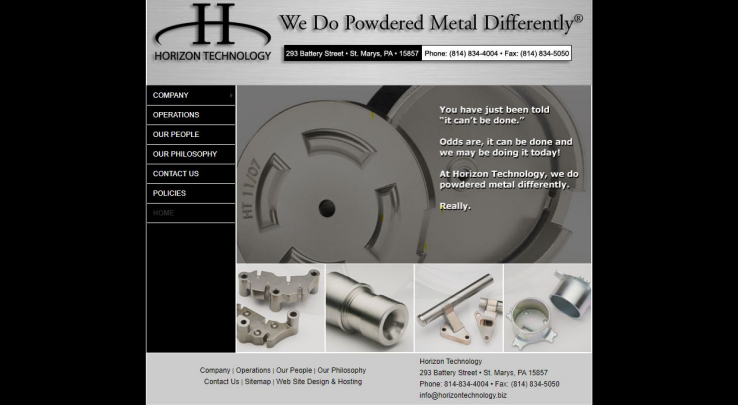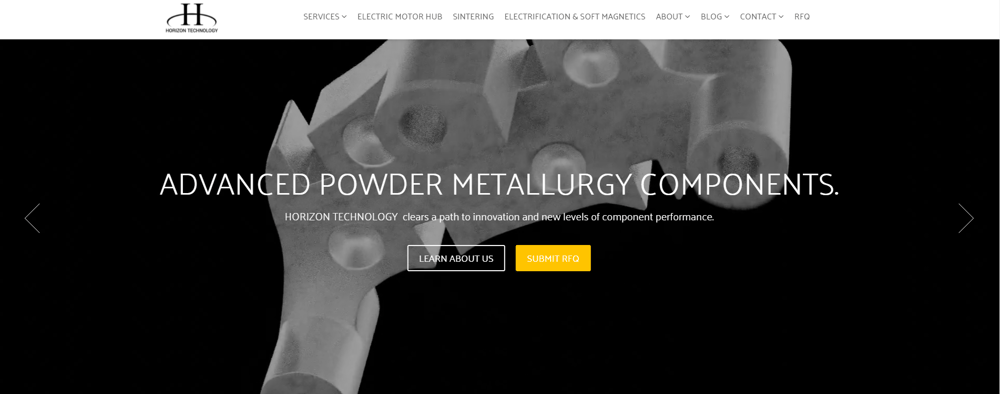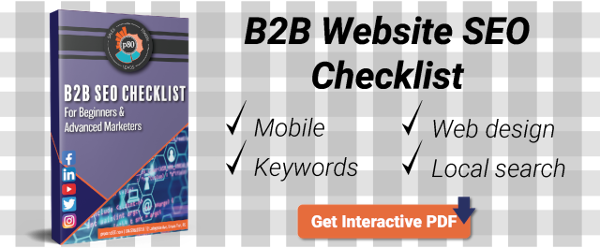How to Start B2B Inbound Marketing
Onboarding & Months 0-3
As a leader at your B2B, you feel a responsibility to improve results by any means necessary. That’s probably what led you to that funny, little idea called inbound marketing.
If you’ve gotten to this point, you’ve either decided to take the plunge or are teetering on the edge. Now … how to start inbound marketing at your company? Starting a TikTok? Sending the team to writing boot camp? Hiring an agency?
We’ll explain below what a new campaign looks like, particularly in months 1-3. Whether you need inbound marketing campaign examples for your in-house plans, or you’re curious about the marketing agency onboarding process, look no further.
Contents
TAKE THE QUIZ!
Do you currently have an in-house marketing team?
How often are you currently producing evergreen article-based content?
Are you promoting any content on social media?
Do you send regular (at least monthly) education-based newsletters to your email database?
Is your website updated to the latest SEO best practices?
Are you doing any paid advertising on google or on social media?
Which best describes your marketing goals?
Do you currently have a Marketing Agency?
Get Resources Based On Your Quiz Results!
(Click the links above to skip forward to a certain section.)
How to Start Inbound Marketing: Month 1
Every company has unique needs, but these are the tactics essential to the first 3 months of just about any inbound marketing strategy. We recommend planning specific tactics no more than 3 months out to reduce wasted efforts due to changing priorities.
(p80 Resource: 3-Month Strategy Templates for B2B Content Mapping)
1A: Strategy
You could easily sum up Month 1 as: research, research, research. Once the ink is dry on your agreement to do inbound, the workshopping and auditing should begin.
Your team or agency needs a crystal-clear understanding of your best buyers, and your starting point for the metrics that matter. A mid-size B2B’s website that only pulls in 100 visitors a month will require a different strategy than one that already draws 10,000 visits/month.
Buyer Research
Inbound is a customer-first philosophy. It’s only natural to start by refamiliarizing yourself with your modern buyer.
It’s startling how differently people inside and outside your building view your products, pros, and cons. Even multiple influential figures within your company may have different ideas of your company’s strengths and your buyers’ preferences.
All internal stakeholders (at least one each from the exec, marketing, sales, and customer service teams) should be present for buyer workshops. You’ll need three workshops to review, build, and align your growth strategy cross-team:
- The branding workshop ensures teams focus on the same unique selling points and reinforce big-picture company goals.
- The buyer persona workshop will help your marketing content target the right people – beyond surface-level demographics.
- Finally, a buyer’s journey workshop pieces together how ideal buyers find you, and what alternatives they consider.
Not done yet! Next, conduct interviews with the company’s ideal buyers – the ones you’d love to clone 100x. Where and how did they research their job issue before landing on you? What purchase factors swayed them to or away from you?
(p80 Resource: Perfect Your B2B Customer Experience Research by Playing 20 Questions)
Self-Research
Now it’s time for some digital soul-searching. Here you’ll learn what’s driving traffic and leads to your website, and what’s simply broken.
- SEO (search engine optimization) audit – You’ll need an exhaustive audit of your website to find where disconnects or poor UX (user experience) are harming Google rankings. You’ll need professional tools (like SEMrush) and probably a web developer to sniff out lead-killers like broken links, slow page loading, and poor mobile experience.
- Keyword research – A huge part of SEO, keywords are a must for your homepage, blog content, etc. These are the terms your buyers use to describe their problems – and your solutions. Audit what your website is currently ranking for – do those keywords match the terms your buyers are probably using, or are they irrelevant? Are there keywords that would make logical topics for your blog?
- Content audit – Those who ignore history are doomed to repeat it. How much content was produced in the past? What types of content? How was it promoted? What topics and formats brought in the most views and conversions? Are there any digital or offline assets that can be salvaged or repackaged?
Competitor Analysis
Here, you’ll do a lot of what you just did above. Those same SEO tools are usually able to spit out information about anyone’s website – including your competitors’.
- See what your competitors are ranking at or near the top of Google for – any keywords there you should swipe?
- Are they blogging about anything you should be blogging about too?
- What social media platforms do they seem to succeed with?
The Battle Plan
Whew. Once you know your buyer and company goals better, the tactical layout can finally begin.
As the real work begins, there should be two planning spreadsheets. One will be a road map that lays out all activities you’ll perform:
- Content creation
- Website updates
- Search engine visibility (SEO/PPC)
- Meetings and reports
The second will be an editorial content calendar. This is where you’ll list specific topics your assets will cover, what the target keywords will be for each, and who’s responsible. This will be the ultimate fruit of your team’s labor in researching competitors, SEO, and past marketing efforts!
(p80 Resource: 3-Month Strategy Templates for B2B Content Mapping)
1B: Setup
The setup stage seems hardly worth mentioning – until a task assignee can’t get started because nobody gave him the password.
To avoid delays and frustrating back-and-forth emails, all parties should have instant access to the tools they need:
- CRM (customer relationship management) system
- Logins – website, social media, other tools
- Assets – print marketing materials, brand/style guides, logos, etc.
Perhaps the most underrated part of how to start a digital marketing strategy that sticks? Establishing consistent dates for meetings and reports.
Especially crucial are the meetings in which the content team interviews your subject-matter experts about the next blog topic and gets feedback/approval on the current topic. Communicate well ahead of time the need for all relevant parties to show up, or else the content will bottleneck. Unpublished assets do zero for your bottom line.
Analysis and reporting is a core component of any relationship with a team or agency. Set expectations for what KPIs should be in the reports, and your monthly deadline. Schedule a recurring meeting to discuss each report.
How to Start Inbound Marketing: Month 2
You’ve made it past the hard part! Now let’s really get crackin’ on deliverables in Month 2.
2A: Website
In Month 2 you’ll lay the groundwork for a strong website that’ll support traffic growth and conversion of great-fit leads. Depending on your needs, steps may include:
Website Migration
If your site lacks the modern features and UX to keep up with competing sites, you’ll move it to a more robust hosting platform. (Stick to WordPress or HubSpot.)
If you’re already on one of those, awesome. If not, you’ll need to devote a big chunk of your first 3 months to website optimization. Here’s why it’s worth upgrading to a fully featured hosting platform:
- Functionality. More freedom in design for aesthetics, SEO, and UX. Lower-tier CMS options force you to hand-design individual HTML pages and manually adjust for SEO and mobile.
- Time. As an example, sites that rely on HTML editing take nearly 2x longer than CMS platforms to create new pages and sections. CMS platforms also have a lower knowledge requirement to use, so more team members can contribute to page building.
- Analytics. When working with WordPress or HubSpot, you’ll receive more data and can make more informed strategic decisions.
Website Redesign
We all know that peer or competitor with an old, crusty website that doesn’t even use a widescreen layout. A redesign can improve user experience while giving your website an overall more modern and polished feel.
Activities in this step may include:
- Adding video of your facility and team
- Updating low-quality photos
- Making content easier to consume quickly

(A B2B manufacturing website pre-inbound)
Above all else, make your information easy to find. For example, promote your blog in your top navigation bar – don’t hide it in your About Us page footer in 6 pt. Font. Menus should flow logically, but not be too cluttered – too many options tends to lower conversion rates.
Lead Conversion
All of the above should help you convert more traffic into leads. Still, there are further, specific steps you can take in Month 2 to double down.
Every page on your website should have clear next steps. That step can be visiting another page, downloading an offer, or contacting your company – whatever it is, make it clear and obvious.
Figure out what kinds of offers would be valuable enough to your persona that they’d willingly pass along their contact info. In the coming months, you’ll turn those valuable offers into premium content that’s “gated” behind a submission form. The visitor gets a free goodie, and you get their email address!
Since proving results ASAP is important for impressing stakeholders, in Month 2 we’ll focus on “quick win” offers:
- Are there any existing assets, digital or physical, you can gate? Examples include e-books, checklists, & whitepapers.
- Is there existing content you can easily repurpose into a gated lead magnet? For example, you could combine several related blog posts into one whitepaper, or transcribe a webinar/video into e-book form.
- For a quick-and-dirty lead magnet, offer signup to your newsletter. Other potentially low-effort, high-impact offers include free consultations and “ask an engineer” forms.
For most offer types, you’ll also need call-to-action graphics/buttons, landing pages, submission forms, and thank-you pages to attract your visitors. These attract eyes to your offer and move the buyer to and from it smoothly.
You’ll also want to write at least one follow-up email associated with the campaign, but that can wait if you’re tied up with a huge website overhaul.
Website Copywriting
Any high-priority pages should get a long look at the customer- and SEO-friendliness of the existing copy. Typical focus areas in Month 2 are:
- Homepage
- About Us
- Services/Capabilities
Make sure these pages directly address customer pain points and opportunities. Include the keywords you’ve identified as ones that ideal buyers are using to research online.
You can also use Month 2 to start writing the brand-new pages your team/agency prescribed. Start with the ones you expect to have the most impact on lead generation.
 2B: SEO/PPC
2B: SEO/PPC
SEO
Now the team will work on that long list of site errors and optimization issues that popped up during your Month 1 audit.
- Technical issues: Again, start with the most damaging issues – tools like SEMrush will categorize SEO issues by urgency. For example, broken links and assets, as well as HTTP & URL issues, may take precedence because they’re highly likely to cause traffic loss.
- Tags & Headers: Rework page title, subtitle (H1), alt text, and meta description tags as necessary to include that page’s focus keyword. Make sure your writing sets clear expectations for the page’s content while demonstrating its value to the reader.
Pay-Per-Click Advertising (PPC)
If you want progress in the early months, consider the “inbound” version of paid online advertising – PPC. A paid ad in Google or – if it fits your persona’s habits – social media can boost traffic and improve lead quality.
You may want to create dedicated PPC landing pages for your campaign to further streamline the visitor’s path to converting.
Since inbound is primarily about laying a foundation for organic, compounding growth through content, your goal should be to reduce reliance on paid ads over time.
2C: Content Marketing
Blogging
Congrats! You’ve made it to the tactic that often leads to the most traffic and lead growth.
Let’s first address the question that never dies: “How often should I blog for my business?” There’s no perfect answer, but more is usually better in Year 1 of doing inbound. If you have the budget, strive for 1+ post per week. (Alternatively, you can revise existing posts with new keywords and information.)
In some cases (i.e. you have low website traffic), it’s wise to start the first few months of blogging with Awareness stage topics. These high-level topics target prospects who are just beginning to define their problem. Awareness stage posts can produce a high volume of organic (nonpaid) traffic.
Social Media
Based on your Month 1 buyer and competitor research, you’ll build new accounts or optimize the existing pages.
Build up your list of hashtags to use and third-party sources to share articles from. This will increase brand visibility and traffic to your blog.
By month’s end, you should at least be ready to share existing first- and third-party content.
How to Start Inbound Marketing: Month 3
At this point, you should be swimming with the content sharks. Blog and other asset production should be in full swing, and your website should be coming together nicely.
3A: Website
If your website needed heavy SEO, UX, or aesthetic work, that effort may roll into Month 3 (and maybe beyond).
Hopefully, though, you’re ready to build out your site with new or revamped pages that’ll engage and convert leads:
- Is your Services/Capabilities page up to date with recent offerings? Are there any easily categorized product/service groups that might merit dedicated, separate pages?
- Do you have an Industries page to make it clear who you serve? Do you have defined verticals worth calling out with separate, dedicated pages?
- Do you have an About Us page that explains the “why” of your company? Does it explain how you differ from competing solutions?
Remember, more pages and longer copy generally equal more opportunity to rank in Google results.

(The same B2B manufacturing website from earlier, post-inbound)
3B: Content Marketing
Blogging
“How often should I blog for my business?” … the question that never dies. There’s no perfect answer, but more is usually better in Year 1 of inbound marketing. If you have the budget, strive for at least one post per week. (Alternatively, you can reoptimize existing posts with better keywords and new insight.)
In some cases (i.e. you have low website traffic), it’s wise to start the first few months of blogging with Awareness stage topics. These high-level topics target prospects who are just beginning to define their problem. Awareness stage posts can produce a high volume of organic (nonpaid) traffic.
Premium Content
It’s time to start a full-blown premium offer! These should be a larger, high-value piece of content, so it’s OK if you don’t complete it in Month 3.
Make room for not just writing and designing the offer, but also the promotional infrastructure. An amazing lead magnet can’t live on an island – it needs:
- Call-to-action graphics
- Landing page
- Thank-you page
- Follow-up email marketing
Email Marketing
Now’s also a good time to go back and create a string of automated, follow-up marketing emails to those who convert on your Month 2 offers.
As for the rest of your contact list? By now you should have something you can share. Establish a regular cadence for sending a “resources & tips” newsletter – monthly is fine at first.
Keep the contents education-first. Don’t pester your hard-earned leads with sales pitches!
Social Media
By now your accounts should be in smooth operation, regularly sharing new and oldie-but-goodie content.
Once you publish new blog posts, Don’t forget to share them ASAP! Try to also get salespeople and other employees to share the content on their personal LinkedIn accounts.
Multimedia
Video and graphics can help your brand look modern and show off capabilities that are best understood with visuals.
There are three marketing videos in particular that are must-haves for many B2B industries:
- Facility tour
- Product or process demo
- About Us page video showing the passion and people who make it all happen
3C: Strategy
Another 3 months will be here before you know it. Look back at early trends, and prep for months 4-6!
- Content: Plan the next quarter of topics, fueled by further keyword research and new insight on company/buyer needs.
- Website: Plan to wrap up loose ends from Months 1-3. Identify the next higher-priority pages to update or create.
- PPC: Review metrics to gain an early idea of the success of keyword, ad designs, and landing pages. Tweak budget/goals as necessary.
In-House? Agency?
The above is a “typical” digital marketing onboarding process for B2Bs. Specific needs will differ company to company, especially if yours is way behind on digital marketing.
It’s a big to-do list – still not sure how you’ll pull it off?
Keeping the work in-house is an option if you want streamlined communication and oversight, and already have skilled writers and SEO/web folks on staff. On the other hand, contracting a B2B inbound marketing agency removes the need to train and overburden your current staff. You’ll also avoid paying salary and benefits for the multiple in-house hires you may need to match an agency’s output and skill set.
Either way, good luck! For a look at successful inbound marketing in action, see these case studies:
What's Next?
Inbound marketing is a big undertaking for one person or even a small team.
Trying to produce content, optimize for lead generation, continually improving your SEO, making sure leads are getting nurtured, etc... is a BIG ask for your in-house marketing team.
Let's chat about your goals!





